Carving-Schwünge auf Skiern bedeuten vor allem sanfte, präzise Bewegungen ohne Rutschen. Während längere Ski traditionell als die erste Wahl fürs Carven galten, machen kürzere Ski wie Snowfeet* es Skifahrern leichter, die Grundlagen zu meistern. Hier ist der Grund:
- Short skis sind leicht, einfacher zu kontrollieren und erfordern weniger Kraft, um die Kanten einzusetzen.
- Sie reagieren sofort auf deine Bewegungen, helfen dir schneller zu lernen und deine Technik zu verbessern.
- Fähigkeiten, die du auf Short Skis erlernst, lassen sich auf andere Skitypen übertragen, was sie zu einem großartigen Trainingswerkzeug macht.
Wenn du dein Carving verfeinern möchtest oder gerade erst anfängst, vereinfachen Short Skis den Prozess und machen ihn spaßiger. Im Folgenden erklären wir, wie Carving funktioniert, wichtige Techniken und Übungen, die dir helfen, besser zu werden.
Wie Carving mit Short Skis funktioniert
Grundlagen des Carving-Turns
Carving-Kurven entstehen, wenn deine Skikanten saubere Bögen in den Schnee schneiden und zwei ordentliche Spuren ohne Schleifen hinterlassen. Diese geschmeidige Bewegung ist dank des gebogenen Designs der Ski möglich. Wenn du sie auf die Kanten kippst und Druck ausübst, folgen sie natürlich einem gebogenen Pfad.
Um effektiv zu carven, lehne dich in die Kurve, während du dein Gewicht zentriert hältst. Je mehr du deine Ski anwinkelst, desto enger werden deine Kurven. Was großartiges Carving ausmacht, ist die Fähigkeit, nahtlos von einer Kurve zur nächsten zu fließen. Wenn du eine Kurve beendest, löst du den Druck von den Kanten und greifst sanft die gegenüberliegenden Kanten für die nächste Kurve. Das erzeugt eine rhythmische, fast mühelose Bewegung.
Längere Ski, wie die von Marken wie Rossignol, Atomic oder Head, können sich manchmal sperrig anfühlen. Ihre Länge erfordert mehr Kraft, um die Kanten zu greifen, was das Carving körperlich anstrengender macht. Hier zeigen Short Skis ihre Stärken.
Warum Short Skis beim Carving besser funktionieren
Snowfeet*-Produkte heben das Carving auf ein ganz neues Level. Mit Längen von nur 44 cm für Skiskates und 65 cm für Skiblades benötigen diese Short Skis viel weniger Druck, um auf die Kanten zu kippen, verglichen mit traditionellen langen Ski.
Short Skis haben eine kleinere Auflagefläche auf dem Schnee, was weniger Widerstand beim Richtungswechsel bedeutet. Dieses Design bietet sofortige Reaktionsfähigkeit – jede Gewichtsverlagerung oder Körperhaltung übersetzt sich direkt in die Ski-Bewegung. Die kompakten Modelle von Snowfeet* sind ein Paradebeispiel für diese Präzision.
Ihre Wendigkeit macht sie perfekt für schnelle, scharfe Kurven auf engen Wegen, das Slalomfahren durch Buckel oder schnelle Anpassungen auf schwierigem Terrain. Die kleinere Größe macht sie zudem unglaublich handlich und gibt dir eine Kontrolle, die schwer zu übertreffen ist.
Ein weiterer großer Vorteil? Die Lernkurve ist bei Snowfeet*-Produkten viel kürzer. Da du nicht so viel Kraft aufwenden musst, um die Kanten zu greifen, können Anfänger sich darauf konzentrieren, ihre Technik zu verbessern, anstatt mit schwerem, unkooperativem Equipment zu kämpfen. Selbst erfahrene Skifahrer profitieren vom unmittelbaren Feedback, das diese Ski bieten, und können so ihre Fähigkeiten feinjustieren.
| Carving-Aspekt | Snowfeet* Short Skis | Traditionelle Long Skis |
|---|---|---|
| Kantenhalt | Erfordert minimalen Druck | Benötigt mehr Druck |
| Kurvenreaktion | Sofort | Langsamer |
| Gewicht | Leicht; weniger Ermüdung | Schwerer; ermüdet schneller |
| Manövrierfähigkeit | Scharfe, schnelle Kurven | Besser für weite, schwungvolle Kurven |
| Lernkurve | Schnell zu erlernende Fähigkeiten | Dauert länger, um es zu meistern |
Dieses Maß an Kontrolle und Reaktionsfähigkeit macht Snowfeet*-Produkte zur fantastischen Wahl für Skifahrer, die eine solide Carving-Technik aufbauen wollen. Egal, ob du gerade erst anfängst oder fortgeschrittene Fähigkeiten verfeinerst, diese Short Skis machen jede Abfahrt angenehmer und geben dir die Freiheit, die Pisten mit Selbstvertrauen zu erkunden.
Wie man auf Skiern carved | 5 Tipps & Übungen für Anfänger / Fortgeschrittene
Kerntechniken für bessere Carving-Schwünge
Um Carving-Schwünge wirklich zu meistern, musst du dich auf drei Schlüsselkompetenzen konzentrieren. Mit Snowfeet*-Produkten werden diese Techniken dank ihres leichten Designs und der schnellen Reaktionsfähigkeit leichter zu erlernen und zu verfeinern.
Balance und Gewichtsverteilung
Das Geheimnis für großartiges Carving liegt darin, dein Gewicht selbstbewusst auf den äußeren (bergab) Ski zu verlagern. Olympiasieger Ted Ligety bringt es perfekt auf den Punkt:
"Es ist über dem Außenski, wo du sein willst!"
Das bedeutet, sich bei jeder Kurve voll auf deinen Abfahrtsski einzulassen. Traditionelle lange Ski, wie die von Rossignol oder Atomic, können diesen Prozess langsamer und körperlich anstrengender machen. Snowfeet*-Produkte hingegen lassen dich dieses perfekte Gleichgewicht sofort spüren dank ihres reaktionsschnellen Designs.
Halte eine hüftbreite Haltung, damit beide Füße während der Übergänge zusammen rollen und die Kanten wechseln. US-Skiteam-Trainer Sasha Rearick betont die Wichtigkeit davon:
"Die Grundlage des Skifahrens lag schon immer auf dem Außenski, und das müssen wir verinnerlichen."
Beginne jede Kurve, indem du dein Gewicht fest auf den Außenski verlagerst. Konzentriere dich dann darauf, deinen Kantengriff und deine Körperposition fein abzustimmen, um deine Carving-Fähigkeiten zu schärfen.
Kantengriff und Körperwinkel
Dein Kantwinkel spielt eine große Rolle dabei, wie scharf deine Skier durch den Schnee carven. Ein steilerer Winkel bedeutet engere, präzisere Kurven. Beginne damit, deine Knöchel und Knie in die Kurve zu rollen. Snowfeet*-Produkte erleichtern es, effektive Kantwinkel mit weniger Aufwand zu erreichen.
Wie die zweifache Olympiasiegerin Mikaela Shiffrin erklärt:
"Im Skifahren beginnt alles vom Boden aufwärts, von den Füßen aufwärts…"
Auch dein Oberkörper spielt eine Rolle. Lehne dich mit dem Oberkörper leicht von der Kurve weg, während dein Unterkörper die Kante setzt. Das hält dich im Gleichgewicht und unter Kontrolle. Ein kleines Beugen und Spitzen des inneren Beins kann helfen, mehr Druck auf den Außenski auszuüben und dein Carving zu verbessern. Für fortgeschrittene Kurven drücke deine Skier zu Beginn jeder Kurve nach außen, um Platz für größere Kantwinkel zu schaffen – und bleibe dabei im Gleichgewicht. Snowfeet* unterstützt diese Bewegungen ganz natürlich und macht fortgeschrittenes Carven mühelos.
Sanfte Kurvenübergänge
Sobald du Gleichgewicht und Kantengriff gemeistert hast, ist der nächste Schritt, sanfte Übergänge zu beherrschen. Wenn du eine Kurve beendest, löse den Druck auf deine Kanten allmählich. Traditionelle lange Ski erfordern oft präzises Timing wegen ihres Gewichts und Schwungs, aber Snowfeet*-Produkte sind nachsichtiger und geben dir mehr Spielraum, deine Übergänge zu perfektionieren.
Lass den natürlichen Rückprall deiner Skier – wenn sie sich nach dem Biegen wieder strecken – dich in die nächste Kurve treiben. Eine hüftbreite Haltung sorgt dafür, dass beide Füße gleichzeitig die Kanten wechseln und so ein nahtloser Fluss von einer Kurve zur nächsten entsteht.
Kernkraft verbindet alles. Mikaela Shiffrin erinnert uns daran:
"Das Erste, was du in einem Kurs tun kannst, ist, deinen Kern anzuspannen, eine stabile Oberkörperposition einzunehmen und diese den ganzen Weg bergab beizubehalten."
Ein starker, stabiler Kern ermöglicht es deinen Beinen, sich unabhängig zu bewegen und dabei das Gleichgewicht zu halten, besonders in den kritischen Momenten zwischen den Kurven. Mit Snowfeet* kannst du eine solide Basis fürs Carven schaffen und dein Skifahren auf das nächste Level bringen.
Übungen zur Verbesserung deines Carvens
Übungen sind eine großartige Möglichkeit, Muskelgedächtnis aufzubauen und deine Kantkontrolle zu verfeinern. Der professionelle Skilehrer Michael Rogan bringt es gut auf den Punkt:
"Zum Carven musst du lernen, deine Skier auf die Kanten zu kippen, anstatt den Ski zu drücken oder zu drehen."
Die Verwendung von Snowfeet* short skis für diese Übungen gibt dir sofortiges Feedback, was das Beherrschen der Techniken fürs Carven erleichtert. Ihr leichtes Design und die Reaktionsfreudigkeit helfen dir, dich schnell anzupassen, was sie zu einer guten Wahl macht, um deine Fähigkeiten zu verfeinern.
Die 5-5-Übung für Kontrolle und Timing
Diese Übung konzentriert sich darauf, zwischen gecarvten Kurven und kurzen, schnellen Kurven zu wechseln, um deine Kontrolle und deinen Rhythmus zu verbessern. So geht's:
- Beginne mit fünf gecarvten Kurven, wobei du dich darauf konzentrierst, deine Skier auf die Kanten zu kippen. Lass die Skier die Arbeit machen und versuche, saubere, parallele Spuren im Schnee zu hinterlassen.
- Folge dem mit fünf kurzen Kurven. Diese müssen nicht gecarvt sein; konzentriere dich einfach auf schnelle Kantwechsel und das Gleichgewicht.
Der Kontrast zwischen den beiden Kurvenstilen hilft dir, den Unterschied zwischen Carven und Schleifen zu spüren und verbessert gleichzeitig dein Timing für sanfte Übergänge. Snowfeet* short skis sind perfekt für diese Übung, da sie sofort reagieren, im Gegensatz zu traditionellen langen Skiern, die sich bei schnellen Übergängen träge anfühlen können. Probiere das auf einem mittleren Hang, wo du mit Geschwindigkeit und Kurvenformen experimentieren kannst.
Kantwinkel-Übung
Diese Übung dreht sich darum, deine Kantwinkel schrittweise zu erhöhen, um Grip und Kontrolle zu verbessern. Starte auf einem sanften Hang und folge diesen Schritten:
- Beginne mit weiten, einfachen Kurven und minimalen Kantwinkeln. Konzentriere dich darauf, das Greifen deiner Skier im Schnee zu spüren.
- Rolle bei jeder Kurve deine Knöchel und Knie weiter in den Hang hinein und kippe deine Skier aggressiver auf die Kanten. Das Ziel ist es, saubere, parallele Spuren ohne Schleifen zu hinterlassen.
Um das Bewusstsein zu schärfen, übe Kantenrollen auf flachem Terrain, indem du dein Gewicht von der Innenkante eines Skis auf die des anderen verlagerst. Das hilft dir zu verstehen, wie subtile Bewegungen deine Skier beeinflussen, ohne zu überkorrigieren – ein häufiges Problem bei Anfängern.
Für eine Herausforderung probiere die Variation Gleise mit Tuck. Bleibe in einer geduckten Position während der Übung und halte deinen Oberkörper stabil, während dein Unterkörper die Arbeit macht. Das erhöht die Schwierigkeit und hilft, die Rumpfstabilität zu entwickeln, die für fortgeschrittenes Carven entscheidend ist. Snowfeet* short skis machen diese Übung leichter zu bewältigen, da ihre kompakte Größe einen gleichmäßigen Kantendruck bei jeder Kurve ermöglicht.
Drucklösung und Übergangsübung
Sanfte Übergänge zwischen den Kurven sind entscheidend fürs Carven, und diese Übung konzentriert sich darauf, den Druck im richtigen Moment zu lösen. So übst du:
- Beginne jede Kurve, indem du dich voll auf deinen Außenski verlässt. Um das zu verstärken, probiere die Übung Außenski, bei der du deinen Innenski während der Kurve leicht vom Boden hebst. So stellst du sicher, dass das Gewicht richtig auf deinem talwärts gerichteten Ski verteilt ist.
- Wenn du die Kurve beendest, lasse den Druck langsam nach und lasse deine Skier begradigen, bevor du in die nächste Kurve kippst. Das hilft dir, natürlich von einer Kurve zur nächsten zu fließen.
Für mehr Kontrolle fahre ohne Stöcke. Das zwingt dich, dich auf deine Beine und deinen Rumpf für Stabilität zu verlassen. Snowfeet* Short Skis zeigen hier ihre Stärke, denn ihr leichtes Design macht es einfacher, die Kontrolle zu behalten.
Eine weitere nützliche Übung ist das Seitwärtsrutschen. Drehe deinen Oberkörper und rolle deine Knöchel talwärts, um deine Skier zu begradigen und ein Seitwärtsrutschen einzuleiten. Kippe dann deine Knie und Knöchel wieder bergauf, um die Kanten zu greifen und anzuhalten. Diese Übung hilft dir, die Kontrolle über deine Kantwinkel in verschiedenen Situationen zu verstehen.
Sobald du die Grundlagen beherrschst, gehe zu Speerwurf-Kurven über. Bei dieser Übung hebst du deinen Innenski komplett vom Boden ab und kreuzt ihn während der Übergänge über deinen Außenski. Das zwingt dich, deine Kanten richtig einzusetzen und lehrt dich, den genauen Moment zu spüren, in dem deine Skier von einer Kante auf die andere wechseln.
Diese Übungen verbessern nicht nur deine Carving-Technik, sondern zeigen auch, wie Snowfeet* Short Skis das Carven reaktionsschneller und intuitiver machen als traditionelle Long Skis. Mit Übung wirst du sehen, wie sie deine Leistung auf der Piste steigern können.
sbb-itb-17ade95
Snowfeet* vs. Long Skis und Snowboards: Warum Short Skis gewinnen
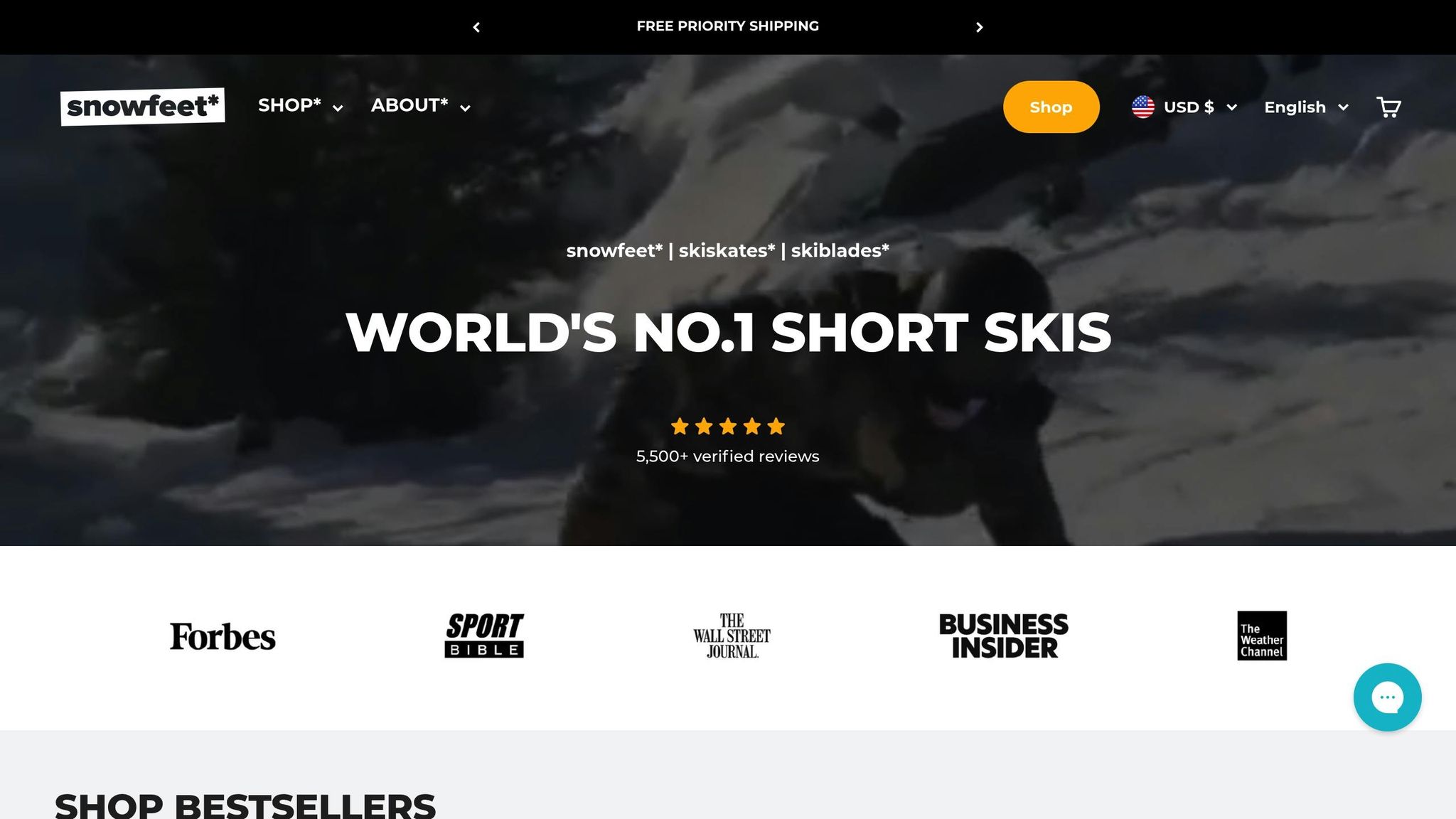
Wenn die meisten an traditionelle Long Skis denken, stellen sie sich hohe Geschwindigkeit und Stabilität vor. Marken wie Rossignol, Atomic, Head und Elan haben sich genau darauf spezialisiert. Aber seien wir ehrlich – die meisten Freizeitskifahrer jagen keinen Abfahrtsrekorden hinterher. Was sie wirklich wollen, ist Kontrolle, schnelles Lernen und ein rundum tolles Erlebnis. Genau hier glänzen Short Skis.
Short Skis machen das Drehen zum Kinderspiel. Sie erfordern weniger Kraft, um Kurven einzuleiten, was schärfere Winkel und schnellere Übergänge ermöglicht. Long Skis hingegen – obwohl großartig für Geschwindigkeit – können sich beim schnellen, präzisen Carven etwas schwerfällig anfühlen.
Snowboards haben ihre eigenen Stärken, besonders im Powder und Freestyle. Aber ihre seitliche Haltung macht das Carven weniger intuitiv als die nach vorne gerichtete Position, die du auf Short Skis natürlich einnimmst.
Snowfeet* bietet Short Skis von 38 cm bis 120 cm, die für Agilität und Spaß entwickelt wurden. Diese kompakten Skier lassen dich mühelos durch Kurven sausen, verschiedene Gelände meistern und ersparen dir das Schleppen schwerer Ausrüstung. Hier ist eine kurze Übersicht, wie Snowfeet* im Vergleich zu Long Skis und Snowboards abschneidet:
Vergleich: Snowfeet* vs. Long Skis und Snowboards
| Merkmal | Snowfeet* (Short Skis) | Lange Skier | Snowboards |
|---|---|---|---|
| Manövrierfähigkeit | Hoch | Niedriger | Mäßig |
| Lernkurve | Schnell | Langsamer | Mäßig bis hoch |
| Portabilität | Hoch | Niedriger | Niedriger |
| Verspieltheit | Hoch | Niedriger | Mäßig |
| Stabilität bei Geschwindigkeit | Mäßig | Hoch | Hoch |
| Am besten geeignet für | Anfänger, Tricks, Beweglichkeit | Fortgeschrittene Skifahrer, Geschwindigkeit | Pulverschnee, Freestyle |
Der verspielte Charakter von kurzen Skiern ist das, was sie wirklich auszeichnet. Während traditionelle Skimarken auf ernsthafte Leistung für erfahrene Skifahrer setzen, richten sich kurze Skier an diejenigen, die eine kreativere und flexiblere Fahrt genießen wollen. Mit kurzen Skiern kannst du schnelle Richtungswechsel, kleine Sprünge und einzigartige Linien ausprobieren, die mit längerer Ausrüstung schwer umzusetzen sind.
Die Gewichtsverteilung spielt ebenfalls eine entscheidende Rolle. Lange Skier verteilen dein Gewicht auf einer größeren Fläche, was das Feedback deiner Kanten dämpfen kann. Im Gegensatz dazu konzentrieren Snowfeet* Produkte dein Gewicht effektiver, was dir bessere Kantenkontrolle und sanfteres Carven ermöglicht.
Außerdem reduziert ihr leichtes Design die Ermüdung, was es einfacher macht, alles zu erkunden – von präparierten Pisten über moderate Buckel bis hin zu Terrainparks.
Am Ende geht es beim Carven nicht nur um die Länge deiner Skier – es geht um Technik. Mit ihrer schnellen Reaktion und verzeihenden Bauweise sind Snowfeet* Short Skis eine fantastische Wahl für alle, die ihre Carving-Fähigkeiten verbessern und dabei jede Menge Spaß auf der Piste haben wollen.
Das Beste aus deinen Snowfeet*-Produkten herausholen
Um deine Snowfeet* Ausrüstung wirklich zu genießen, geht es darum, das passende Modell zu wählen, deine Ausrüstung in Topzustand zu halten und zu wissen, wo du am besten fährst.
Das richtige Snowfeet*-Modell wählen
Das richtige Snowfeet*-Modell zu finden, hängt von deinem Können und dem Gelände ab, das du befahren möchtest. Snowfeet* bietet drei Hauptoptionen: Snowfeet Basic*, Snowfeet II* und Snowfeet X*. Jede richtet sich an unterschiedliche Bedürfnisse und Budgets.
- Für Anfänger: Der Snowfeet Basic* ist ein großartiger Einstieg. Für rund 150 $ ist er perfekt, um die Grundlagen des Carvens zu lernen, ohne zu viel zu investieren.
- Für fortgeschrittene Skifahrer: Der Snowfeet II* ist die beliebteste Wahl. Er bietet ein ausgewogenes Verhältnis von Qualität und Preis und ist haltbarer als das Basic-Modell. Wenn du deine Fähigkeiten verbessern willst, ohne viel auszugeben, ist das der Richtige.
- Für fortgeschrittene Fahrer: Der Snowfeet X* ist für alle, die Spitzenleistung wollen. Mit verstellbaren Bindungen und extra Robustheit ist er für härtere Gelände und das Austesten deiner Grenzen gebaut.
Bei der Wahl der Länge denke an deinen Stil. Kürzere Modelle (44–65 cm) sind ideal für schnelle, freestyle Moves, während längere (bis zu 99 cm) mehr Stabilität bieten. Wenn du Erfahrung im Eislaufen oder Hockey hast, fühlen sich kürzere Skiskates (etwa 44 cm) dank ihrer vertrauten Haltung und scharfen Kantenkontrolle natürlicher an.
Wenn du dein Modell gewählt hast, sorgt die Pflege dafür, dass es wie ein Traum läuft.
Wartung für beste Leistung
Um deine Snowfeet* in Topform zu halten, konzentriere dich auf regelmäßiges Wachsen, Bindungsprüfungen und richtige Lagerung.
- Wachsen: Das Wachsen deiner Snowfeet* ist entscheidend für ein geschmeidiges Gleiten und besseren Kantengriff. Eine schnelle 15-minütige Wachssession alle paar Ausfahrten kann einen großen Unterschied machen. Schnapp dir ein einfaches Wachskit, und du bist startklar.
- Befestigungsprüfungen: Überprüfe vor dem Pistenstart deine Bindungen auf Abnutzung, lose Schrauben oder ausgefranste Riemen. Das ist besonders wichtig bei Modellen wie dem Snowfeet X*, die verstellbare Bindungen haben.
- Aufbewahrung: Bewahre deine Snowfeet* an einem trockenen Ort, fern von Hitze oder direktem Sonnenlicht auf. Ihre kompakte Größe macht sie viel leichter zu lagern als traditionelle Skier – kein Kampf mehr mit sperrigem Equipment!
Mit gut gepflegter Ausrüstung bist du bereit, verschiedene Gelände zu erkunden und deine Fähigkeiten zu verbessern.
Verschiedene Gelände zum Fähigkeitenaufbau
Eines der coolsten Dinge an Snowfeet* ist ihre Vielseitigkeit. Du kannst auf allen möglichen Geländen üben, was sie perfekt macht, um deine Carving-Technik zu verbessern.
Beginne auf präparierten Pisten, um Selbstvertrauen aufzubauen. Sobald du saubere Spuren hinterlässt, steig auf steilere Abfahrten um. Auf diesen Pisten verbreitere deine Standposition, mache längere Schwünge und beende jede Kurve leicht bergauf, um deine Geschwindigkeit zu kontrollieren.
Snowparks sind eine weitere tolle Option. Die kurze Länge und Agilität von Snowfeet* machen sie ideal, um Park-Features zu meistern, schnelle Kurven zu üben und die Kantentechnik zu perfektionieren.
Und hier kommt das Beste: Du brauchst kein teures Skigebiet zum Üben. Ob präparierte Piste, Snowpark oder sogar dein eigener Gartenhügel – mit Snowfeet* kannst du deine Fähigkeiten fast überall dort verfeinern, wo Schnee liegt. Je mehr du übst, desto näher kommst du der Carving-Perfektion.
Fazit: Verbessere dein Carving mit Snowfeet*
Das Erlernen von Carving-Schwüngen muss kein frustrierender, langwieriger Prozess sein – oder das Budget mit teuren Liftkarten sprengen. Snowfeet*-Produkte machen es einfacher, deine Technik zu verfeinern und schnell Selbstvertrauen aufzubauen. Ihr kompaktes Design, die reaktionsfreudigen Kanten und das benutzerfreundliche Gefühl sind perfekt für alle, die ihre Fähigkeiten verbessern wollen.
Fang klein an. Übe grundlegende Übungen auf sanften Hängen und steigere dich, sobald du mehr Selbstvertrauen hast. Beständigkeit ist der Schlüssel – regelmäßiges Training ist der schnellste Weg, Carving zu meistern.
Was macht Snowfeet* besonders? Im Gegensatz zu traditionellen langen Ski von Marken wie Rossignol oder Atomic bietet Snowfeet* einen einzigartigen Vorteil. Ihre kürzere Länge und Portabilität machen sie weniger einschüchternd und geben dir sofortiges Feedback, das hilft, Muskelgedächtnis zu verankern. Das bedeutet schnellere Fortschritte, egal ob du bei der Agilität kurzer Ski bleibst oder auf längere umsteigen möchtest.
Und es geht nicht nur ums Carving. Snowfeet*-Produkte sind vielseitig genug für alles, von lokalen Hügeln bis hin zu echten Resort-Abenteuern. Sie sind leicht zu verstauen, einfach zu transportieren und nehmen dir den Aufwand beim Skifahren ab.
Nicht sicher, wo du anfangen sollst? Probier die Snowfeet Mini Ski Skates für Einsteiger-Carving oder greif zu den Snowfeet PRO, wenn du bereit bist, anspruchsvolleres Gelände zu meistern. Halte einfach die Kanten scharf und die Beläge gewachst, und du bist startklar.
Die Pisten rufen, und dein Carving-Spiel steht kurz davor, ein neues Level zu erreichen. Schnapp dir deine Ausrüstung, ab auf den Schnee und lass deine Schwünge für sich sprechen.
FAQs
Wie machen kurze Ski wie Snowfeet* das Lernen für Anfänger im Vergleich zu traditionellen langen Ski einfacher?
Kurze Ski, wie Snowfeet*, sind eine großartige Wahl für Anfänger, weil sie leichter, kleiner und viel einfacher zu handhaben sind als traditionelle lange Ski. Ihre kompakte Größe macht das Drehen schneller und präziser, was neuen Skifahrern hilft, sich sicherer und kontrollierter zu fühlen. Dieses Design erleichtert es, wichtige Fähigkeiten wie Carving und Gleichgewicht zu erlernen.
Im Gegensatz zu längeren Skiern bekannter Marken wie Rossignol oder Atomic wirkt das kleinere Design von Snowfeet weniger einschüchternd, besonders wenn du eisige oder schwierige Pisten bewältigst. Außerdem bedeutet ihr leichtes Gewicht weniger Ermüdung, sodass du dich aufs Lernen konzentrieren kannst, ohne erschöpft zu sein. Wenn du gerade erst anfängst, macht Snowfeet* deinen Einstieg ins Skifahren viel angenehmer und leichter handhabbar.
Was sind die besten Übungen, um meine Carving-Kurven mit Snowfeet* Mini-Ski zu verbessern?
Um deine Carving-Kurven mit Snowfeet* Mini-Ski zu schärfen, probiere ein paar gezielte Übungen, die sowohl Kontrolle als auch Präzision verbessern. Beginne mit Seitwärtsrutschen – eine einfache, aber effektive Methode, um die Kantenkontrolle zu meistern. Diese Übung hilft dir, dein Gleichgewicht zu verfeinern und die Position deiner Ski mühelos zu steuern.
Als Nächstes arbeite an Knöchel- und Kniekippbewegungen. Diese Technik dreht sich darum, mit subtilen Bewegungen die Kanten deiner Ski zu aktivieren für sanftere, präzisere Kurven. Es ist eine großartige Methode, um Vertrauen beim Navigieren enger Kurven aufzubauen.
Ein weiteres Muss sind Gewichtsverlagerungsübungen. Indem du deine Knöchel rollst und dein Gewicht auf die Ski-Kanten verlagerst, ahmst du Techniken traditioneller Skier nach, aber auf eine Weise, die perfekt zum kompakten, leichten Design von Snowfeet* passt. Diese Mini-Ski sind ideal für enge Räume und überfüllte Pisten und bieten unvergleichliche Agilität und Kontrolle.
Im Vergleich zu traditionellen Skiern von Marken wie Rossignol oder Atomic sind Snowfeet* leichter zu handhaben und bieten eine schnellere Lernkurve, was sie zu einer fantastischen Wahl für Skifahrer aller Niveaus macht. Bleib bei diesen Übungen, und du wirst eine große Verbesserung deiner Carving-Fähigkeiten und deines gesamten Spaßes auf der Piste bemerken.
Was sind die besten Methoden, um Snowfeet* Kurzski für Spitzenleistung zu pflegen?
Wie du deine Snowfeet* Ski pflegst
Deine Snowfeet* Kurzski in Topform zu halten, erfordert nicht viel Aufwand, aber ein wenig regelmäßige Pflege wirkt Wunder. Alle 4–6 Ausfahrten gönn ihnen etwas TLC:
- Reinigen: Wische Schmutz oder Ablagerungen ab.
- Gründlich trocknen: Das verhindert Rostbildung.
- Wachsen: Eine frische Schicht Skiwachs sorgt für geschmeidiges und müheloses Gleiten.
- Kanten schärfen: Das hilft dir, bessere Kontrolle und Präzision zu behalten, besonders bei Carving-Kurven.
Diese Schritte verbessern nicht nur die Leistung, sondern helfen auch, deine Snowfeet* Ski länger haltbar zu machen – so sind sie bereit für jedes Winterabenteuer, das du geplant hast.

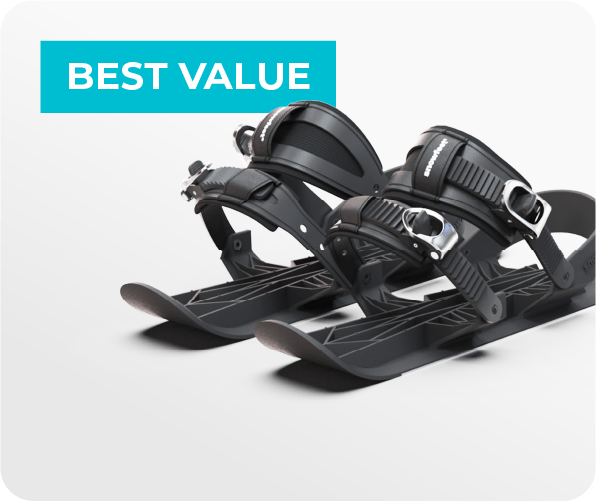



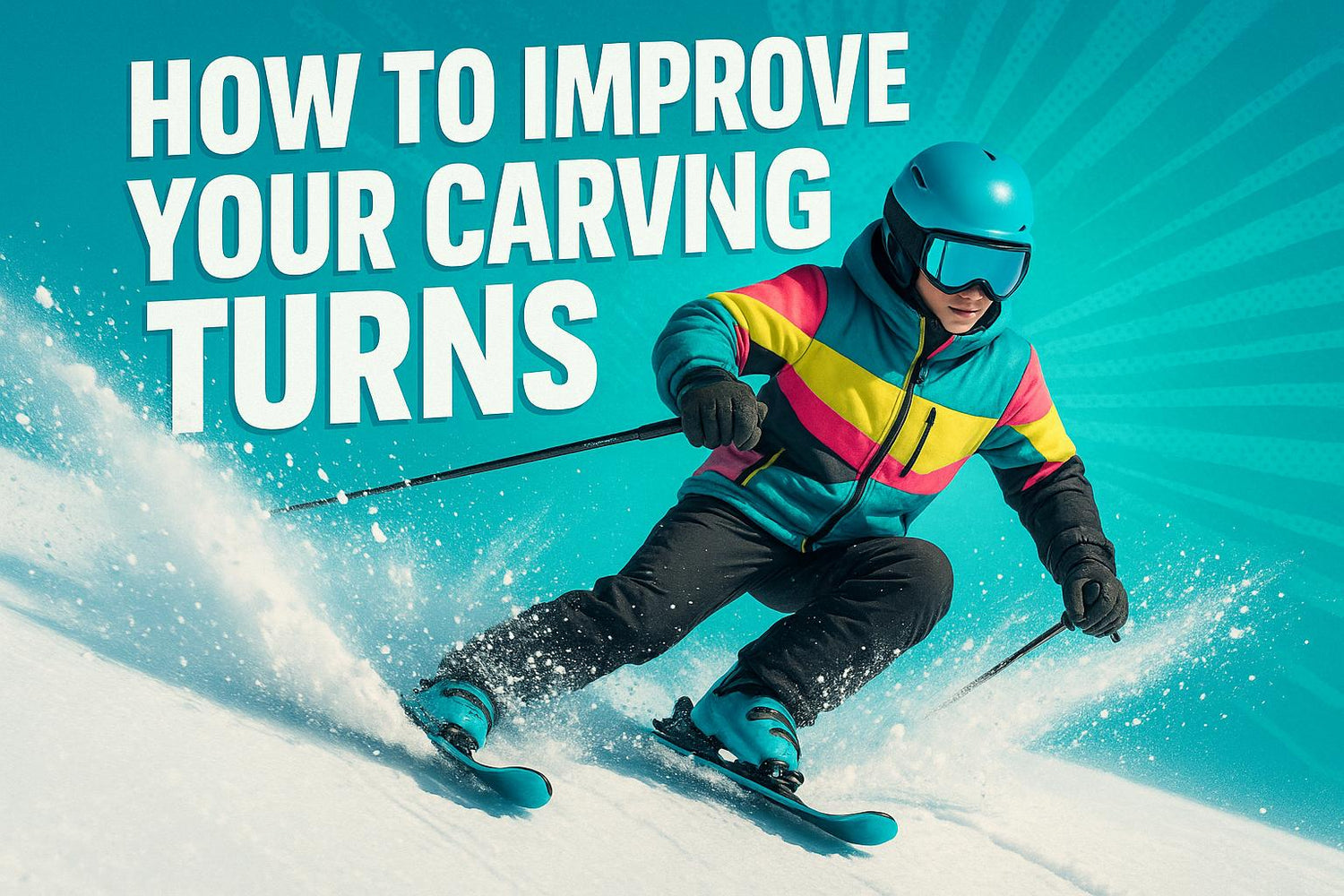
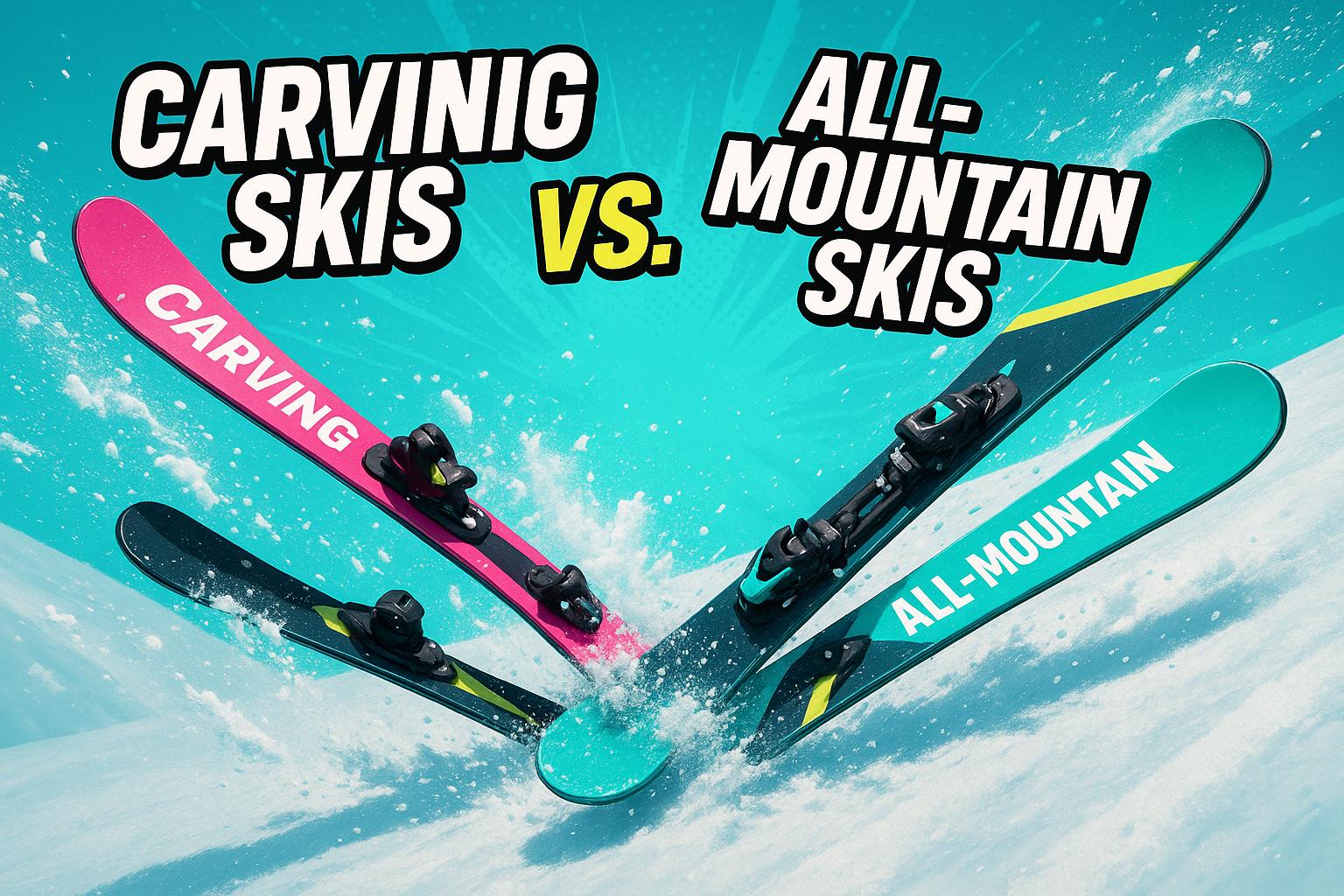
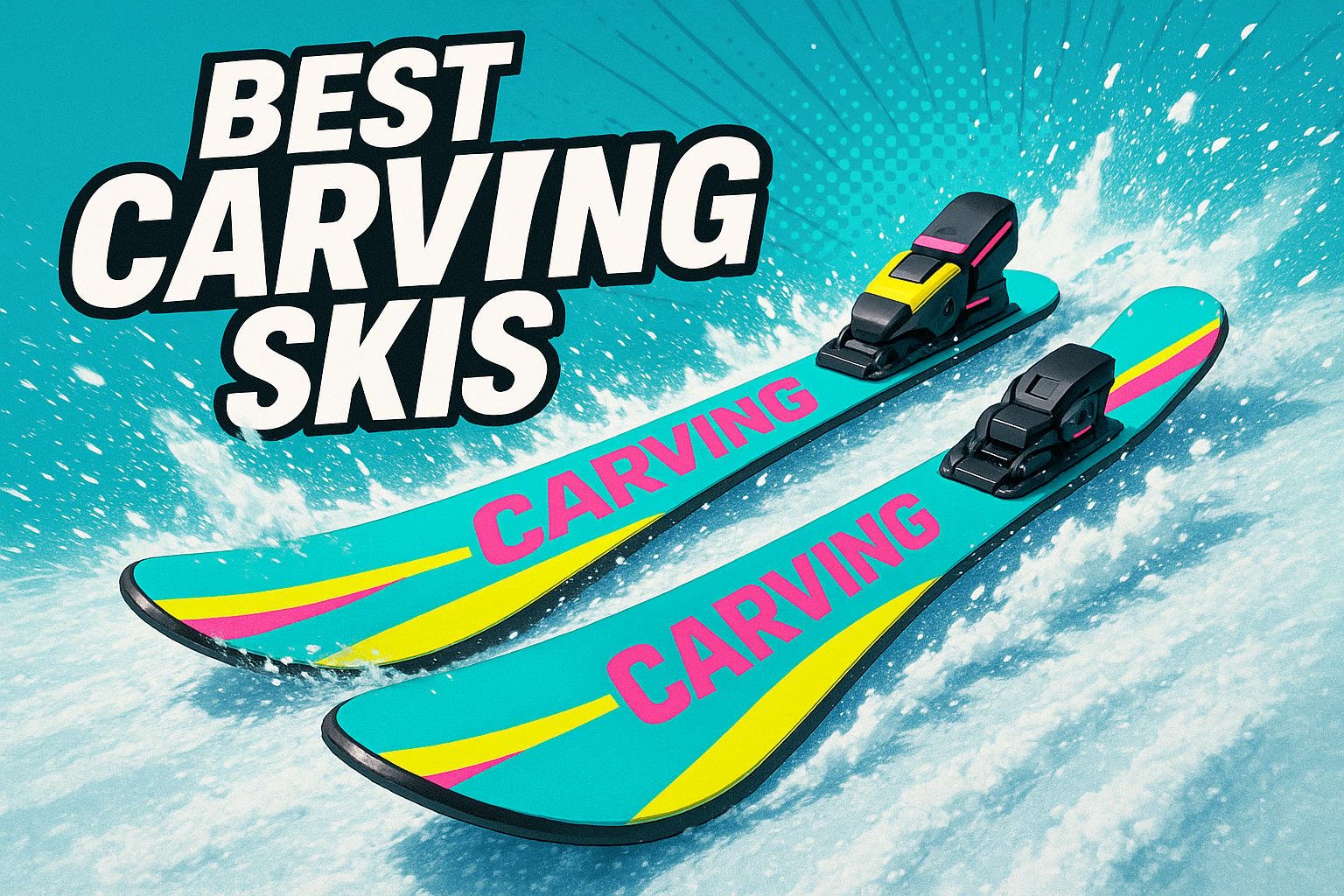
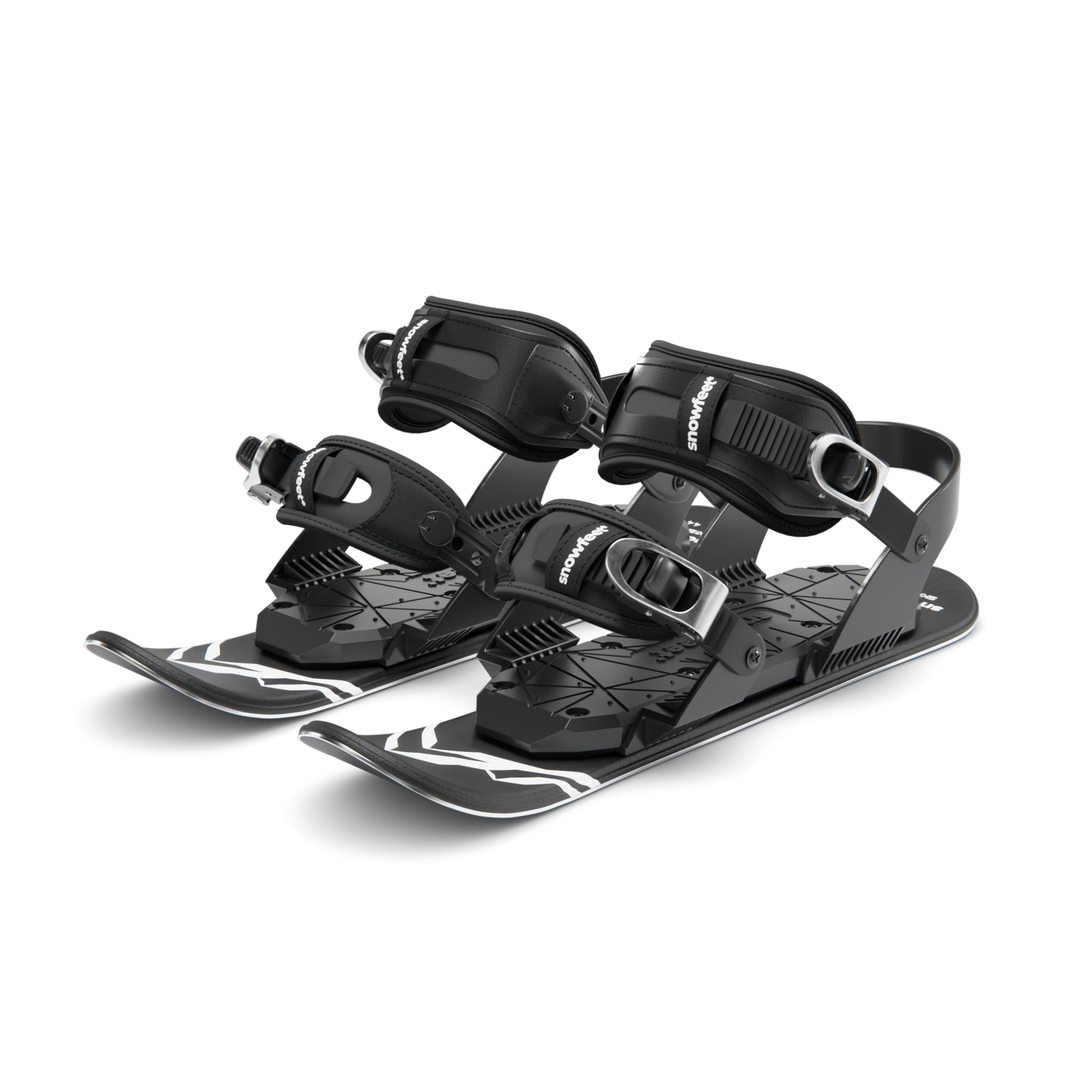

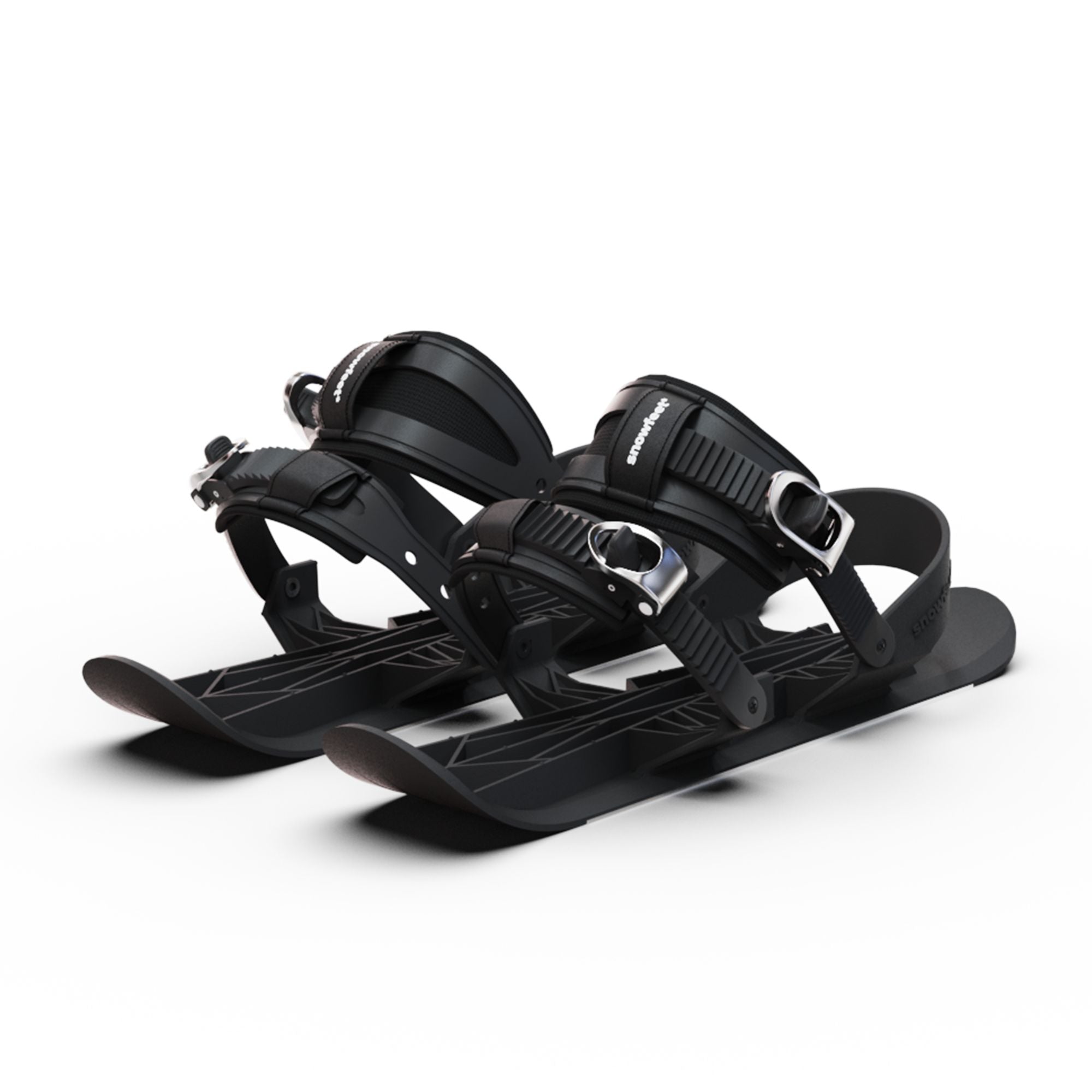
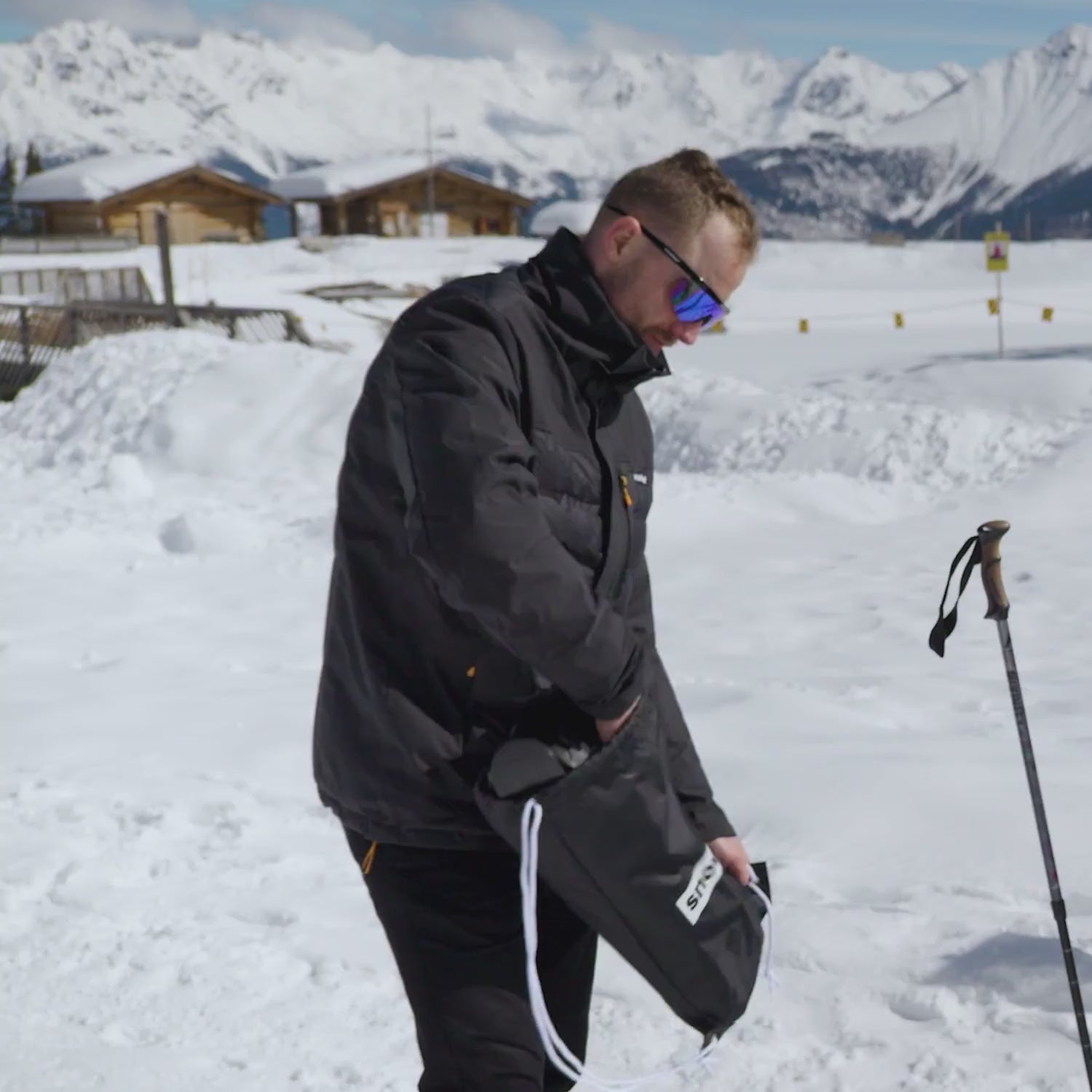
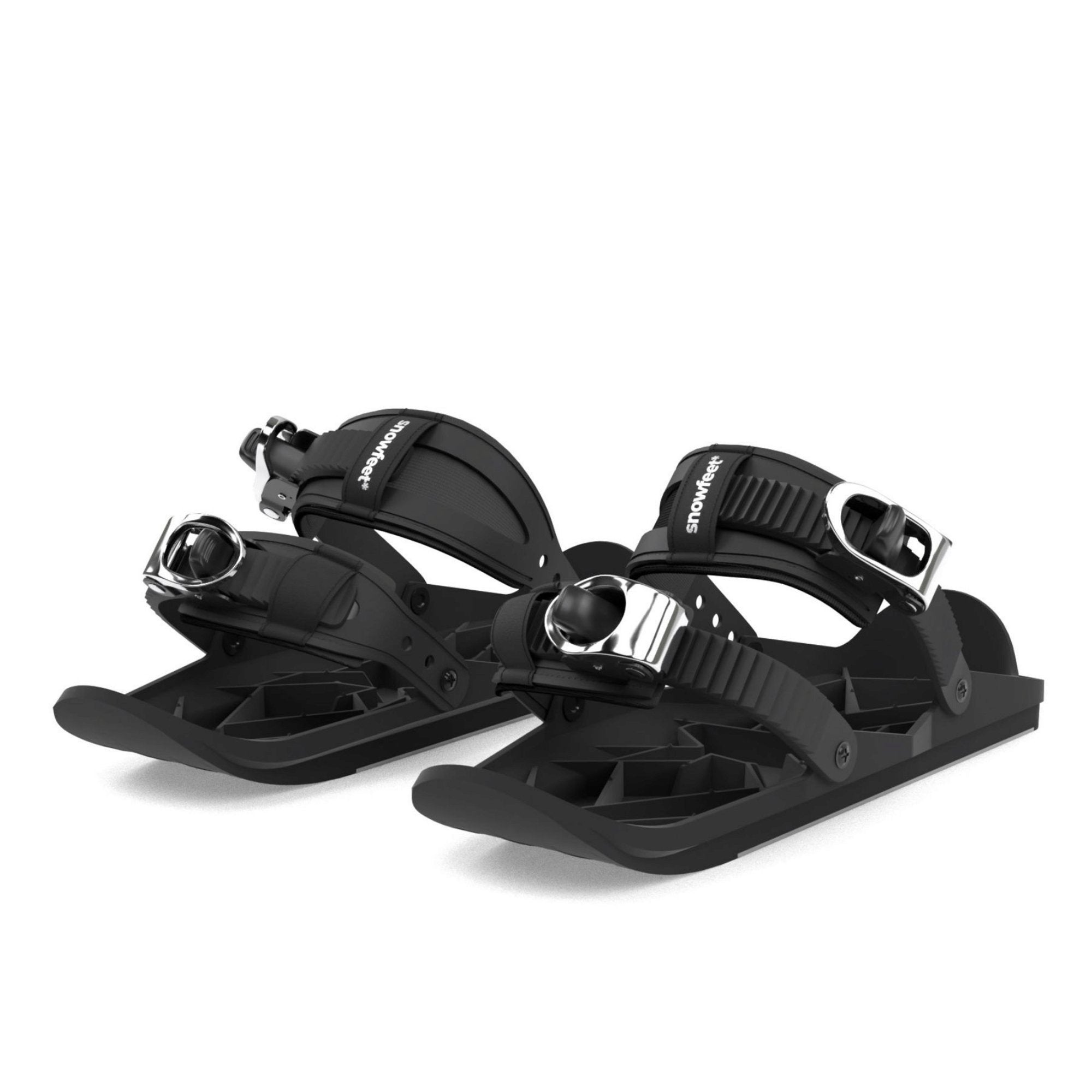
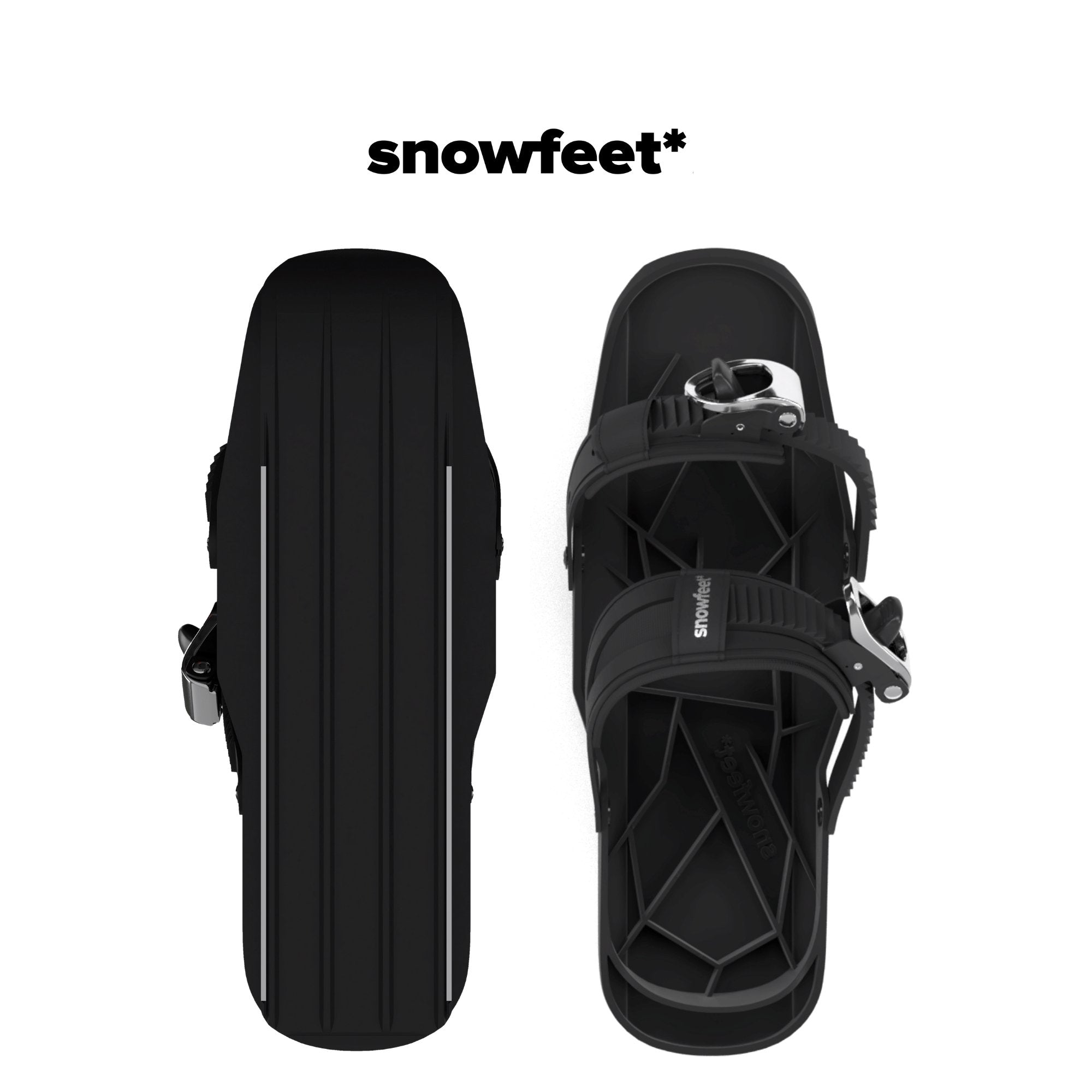
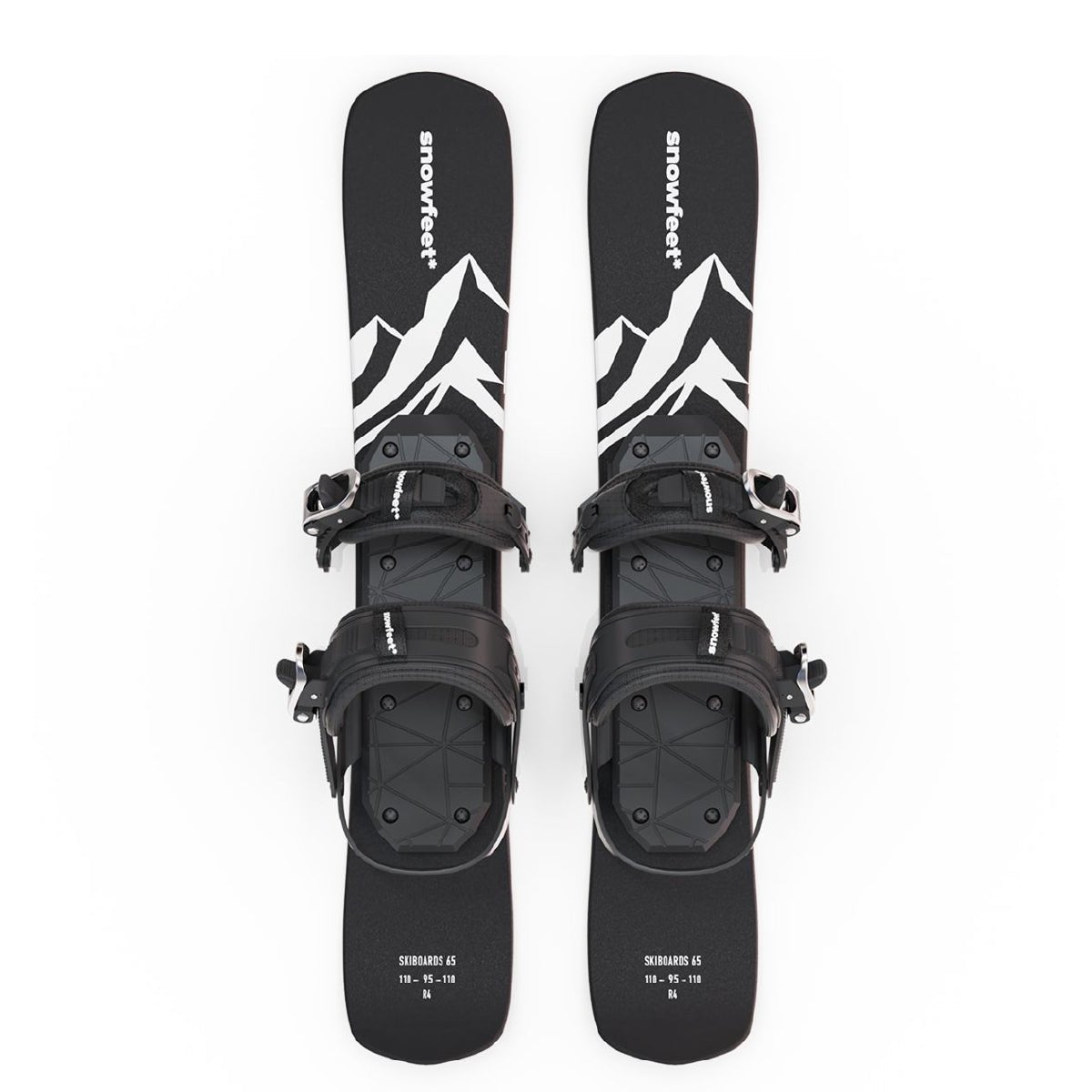
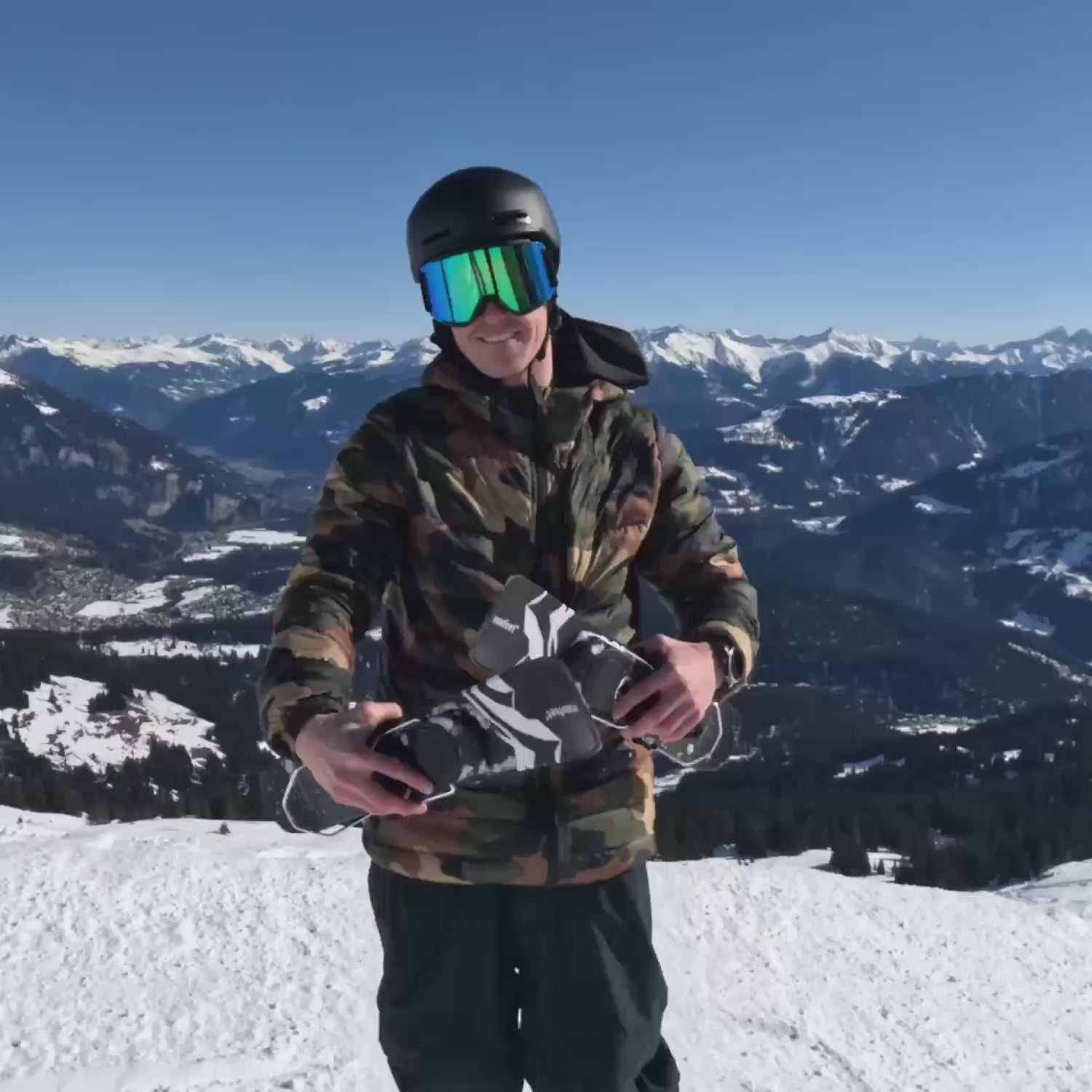
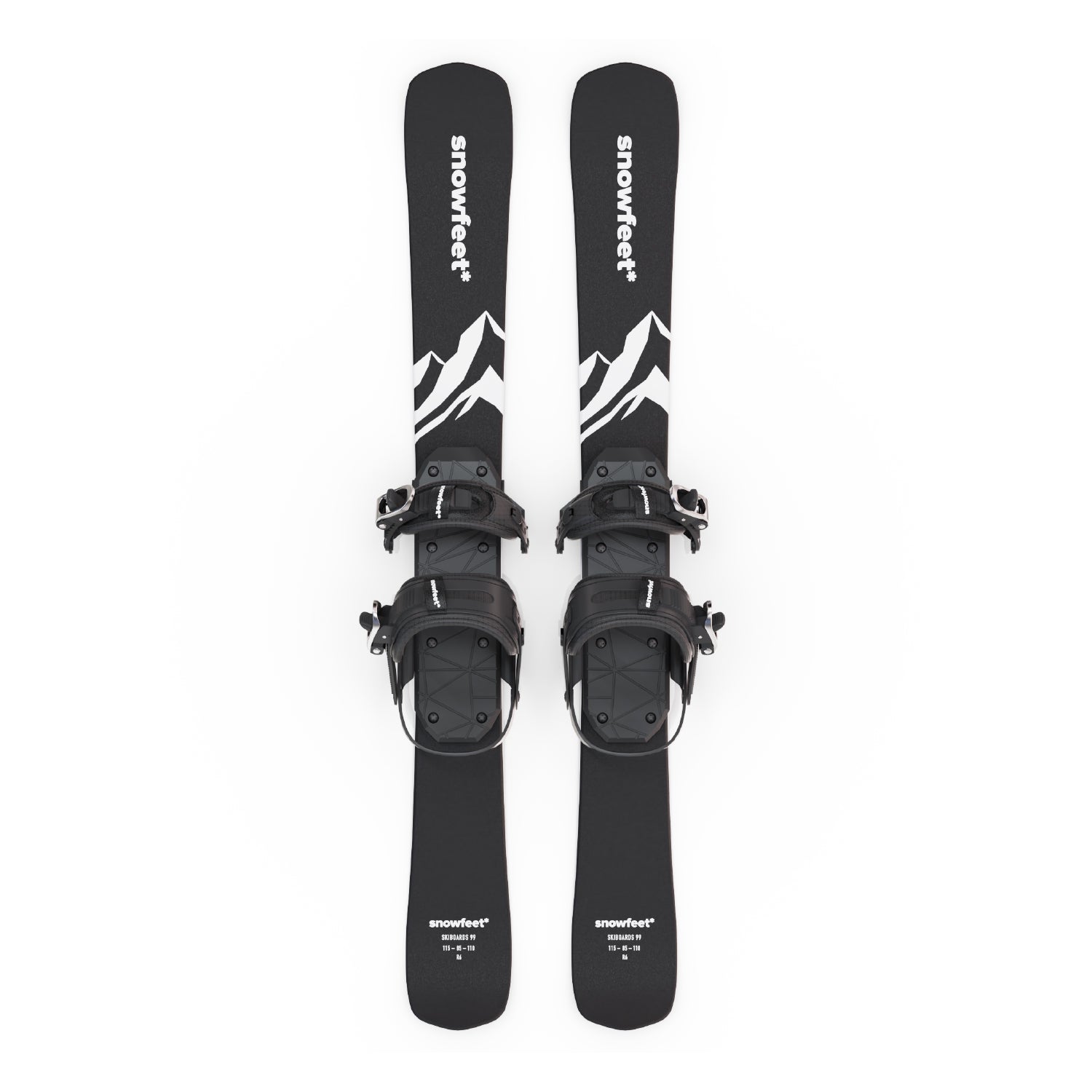
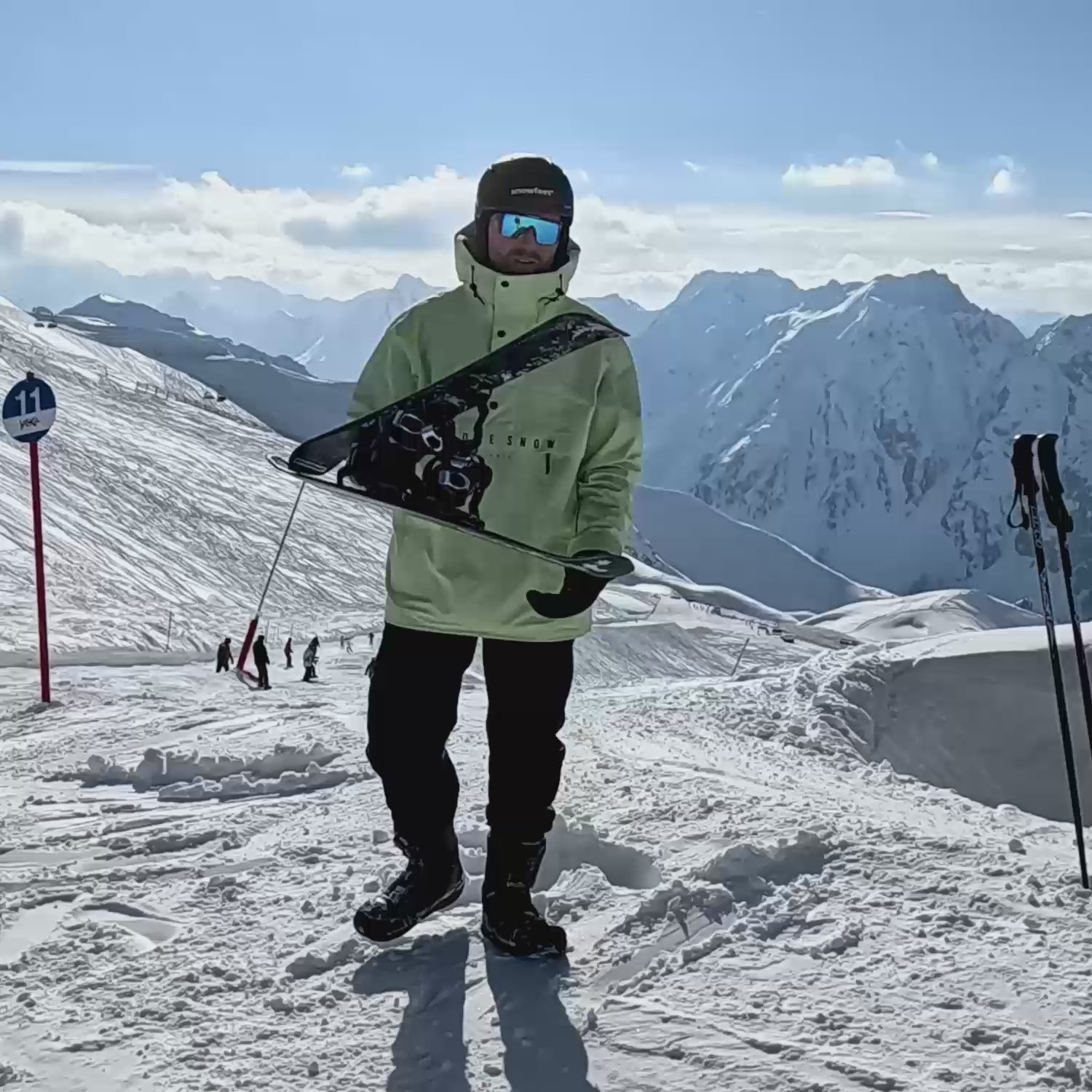
Einen Kommentar hinterlassen
Diese Website ist durch hCaptcha geschützt und es gelten die allgemeinen Geschäftsbedingungen und Datenschutzbestimmungen von hCaptcha.